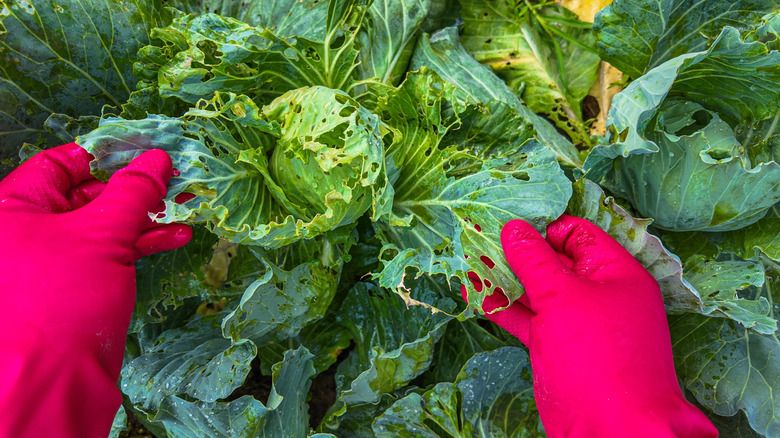The Trick Boomers Use To Stop Pests From Destroying Garden Cabbage
It is pretty common to hear about gardening hacks from grandparents, parents, and old aunties we only see every few years. Old-fashioned gardening tips can often sound a little bit silly, but many of them actually work. For example, a lot of the companion planting pairings we use today come from ancient systems, trialing different crops, and passing down information. One gardening trick your grandma may swear by is wrapping strips of newspaper around the roots of cabbage before planting them out. It is said that doing so prevents cutworms from getting to the plant. So, does it work, and is it the best way of protecting your cabbages from cutworms?
Cabbages usually need to be started off inside and then transplanted outdoors. However, the cabbage seedlings are vulnerable to pests once they get planted out, especially cutworms. There are different types of cutworms, with each type damaging different parts of the plant. Subterranean cutworms stay below the ground and feed on the roots. However, surface cutworms curl around the stem of the plant and eat it during the night. This means the plants will be cut just above the surface of the soil. Since many cutworms attack the seedlings above the soil, just protecting the roots is not enough to ensure that they stay safe from these pests. So, the boomer gardening hack of wrapping strips of newspaper around the roots of cabbage may only protect your crops from certain types of cutworms.
How to protect cabbages from cutworms
Although newspaper strips placed around the roots don't work to protect your plants from all types of cutworms, there are similar garden hacks that can work really well. Surface cutworms need to circle a stem completely in order to eat it, so you can place a wooden stick or nail right next to the stem to deter them. Creating a barrier to place around your seedlings can also help. Create a circular collar with stiff cardboard that leaves half an inch around the stem. Make sure it extends two inches below the surface of the soil and at least one inch above. An old toilet roll tube may be perfect for this, but you can create your own to ensure it is the correct size for your seedlings. You can also use aluminum foil to banish garden-destroying pests in a similar way, by creating a collar with it and placing it around your cabbage seedlings.
Alongside this gardening wrapping technique, there are other things you can do to take down cutworms in your garden and protect your cabbage plants. Control the weeds and plant debris in your yard to reduce the food that cutworms are attracted to, and handpick and crush any larvae that you come across. You may also wish to encourage natural enemies of cutworms in your garden, such as ground beetles, rove beetles, spiders, wasps, and birds.

